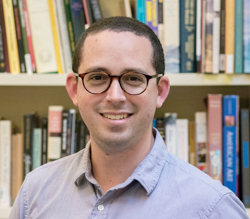How did Hagar become Black? That is the historical puzzle biblical scholar Professor Nyasha Junior of Temple University investigates in her new book, Reimagining Hagar: Blackness and Bible (Oxford, 2019).
Hagar first appears in Genesis chapters 16 and 21 as the Egyptian slave of Sarah, the wife of Abraham. Due to her inability to conceive with Abraham, Sarah offers Hagar to her husband as a surrogate and Ishmael is born.
And Hagar bare Abram a son; and Abram called his son’s name, which Hagar bare, Ishmael. (Genesis 16:15, King James Bible)
Later, Sarah miraculously gives birth to Isaac and commands Abraham to drive Hagar and Ishmael out of her home.
And Abraham rose up early in the morning, and took bread, and a bottle of water, and gave it unto Hagar, putting it on her shoulder, and the child, and sent her away: and she departed, and wandered in the wilderness of Beersheba. (Genesis 21:14, King James Bible)
We actually know little about Hagar’s origins from the biblical text other than the fact that she is an Egyptian. Over the course of her teaching at Howard University, a historically Black university, Professor Junior often encountered certainty among her students that Hagar was Black. On the other hand, she also met people to whom this was an entirely new idea. Professor Junior wanted to understand how this relatively obscure biblical character came to embody her contemporary identity, particularly among African Americans.
Reimagining Hagar is what scholars call a reception history, an investigation into the afterlife of the biblical character Hagar. After explaining Hagar in her ancient setting, Professor Junior leaps forward to the pre-Civil War period and the debates between pro- and anti-slavery forces. What she finds is surprising and begins the process of unravelling the mystery of how Hagar became Black. I spoke with Professor Nyasha Junior on October 2, 2019.







